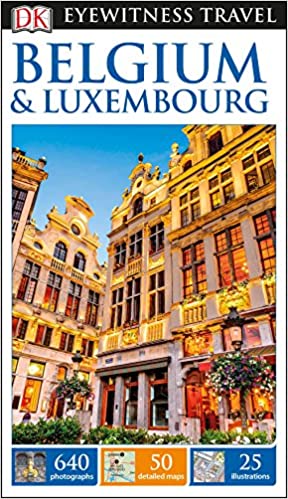The home of Belgium’s ‘Maneblussers’
The captivating city of Mechelen in the heart of Flanders is perfect for a Belgian getaway. This charming European city has so much to offer the curious visitor and glides effortlessly under many travellers’ radars.
Gary and I adored Mechelen as soon as we stepped foot onto its historic cobbled-stoned streets. If you are looking for a relaxing mini-break with character, culture and an intriguing past, then Mechelen is undoubtedly for you.
Mechelen is easily navigated on foot, with many of its historical sights and museums within strolling distance of Mechelen’s picturesque Grote Markt. You’ll be left longing for more, even after discovering Mechelen’s ancient brewery, climbing its towering belfry and sampling its delicious fare.
So, let’s explore Mechelen, Flanders’s little secret.
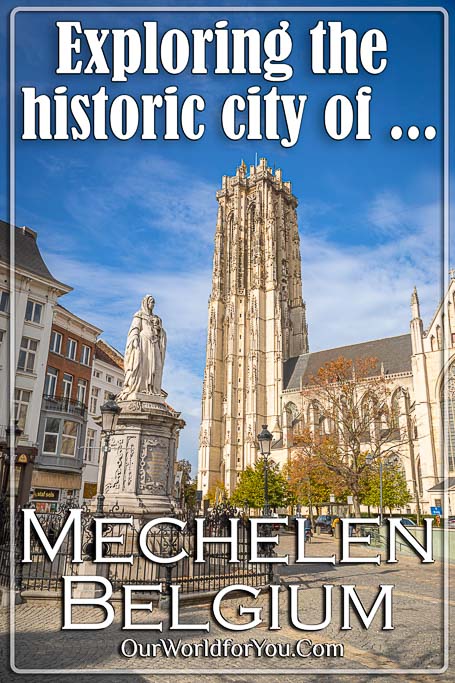
Where is Mechelen?
How to get to Mechelen
- By Train
Start creating your own Mechelen adventure by train and discover the cultural delights of this picturesque city at a relaxed pace. Explore the sites amongst the charming city streets.
In under 2 hours and 45 minutes from the UK, you can hop on the Eurostar to Brussels, change onto a Belgium National Rail train to Mechelen, and your Flemish fun begins.
- By Car
If you’re venturing from the UK, jump on Le Shuttle and tour Belgium under your own steam.
Alternatively, it’s so easy to visit Flanders on a road trip. Rental Cars search multiple well-known car hire brands and find the best deals that suit you.
A brief history of Mechelen
A delightful Flemish treatThe ancient city of Mechelen sits on the banks of the River Dyle in northern Belgium. It can trace its historical roots back to the Roman occupation during the Gallo-Roman period.
The city was converted to Christianity with the arrival of Saint Rumbold, an Irish missionary. The eye-catching cathedral in Mechelen’s Grote Markt is dedicated to the saint.
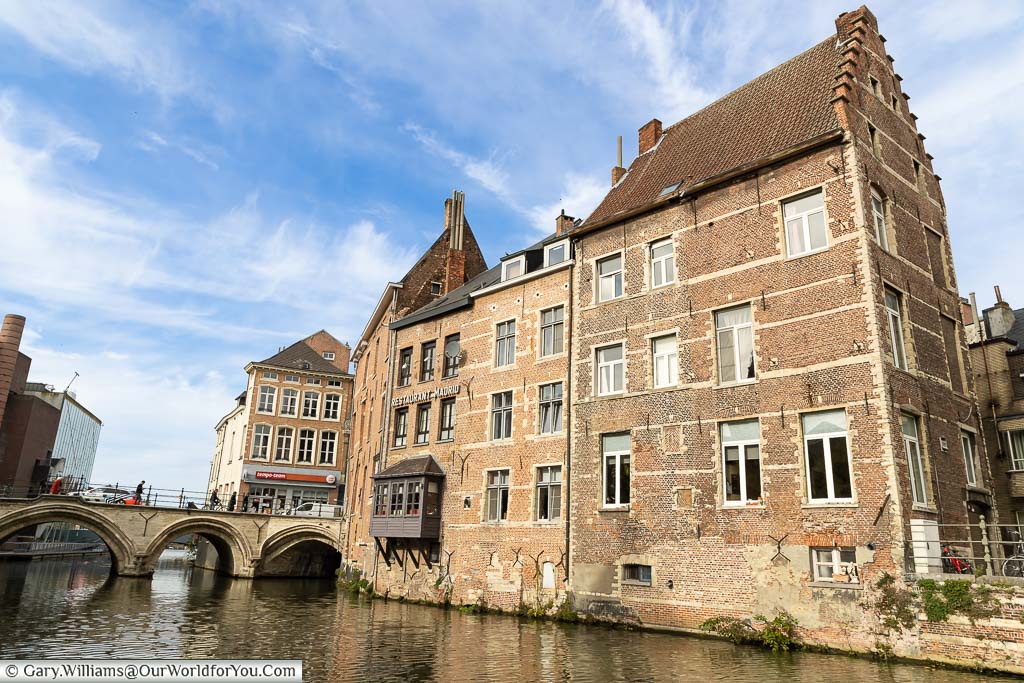
Along with other Belgian cities, the flourishing town of Mechelen prospered during the Late Middle Ages from their thriving cloth industry. Similar to Ghent, it traded with England for its high-quality wool. Through this period, Mechelen became the Low Countries’ capital.
During the 15th-century, Mechelen came under the rule of the Dukes of Burgundy and Charles the Bold played a prominent role in the city. There are references to Charles V throughout Mechelen and his three wives, particularly his third wife, Margaret of York.
Fast forward to the 19th-century, and Mechelen entered the Industrial Age and, in 1835, built the first railway on the European continent, which linked Mechelen to Brussels. Mechelen continued to develop its railway network during the early 20th-century; unfortunately, this led to the Nazis using Mechelen as a transit hub to concentration camps.
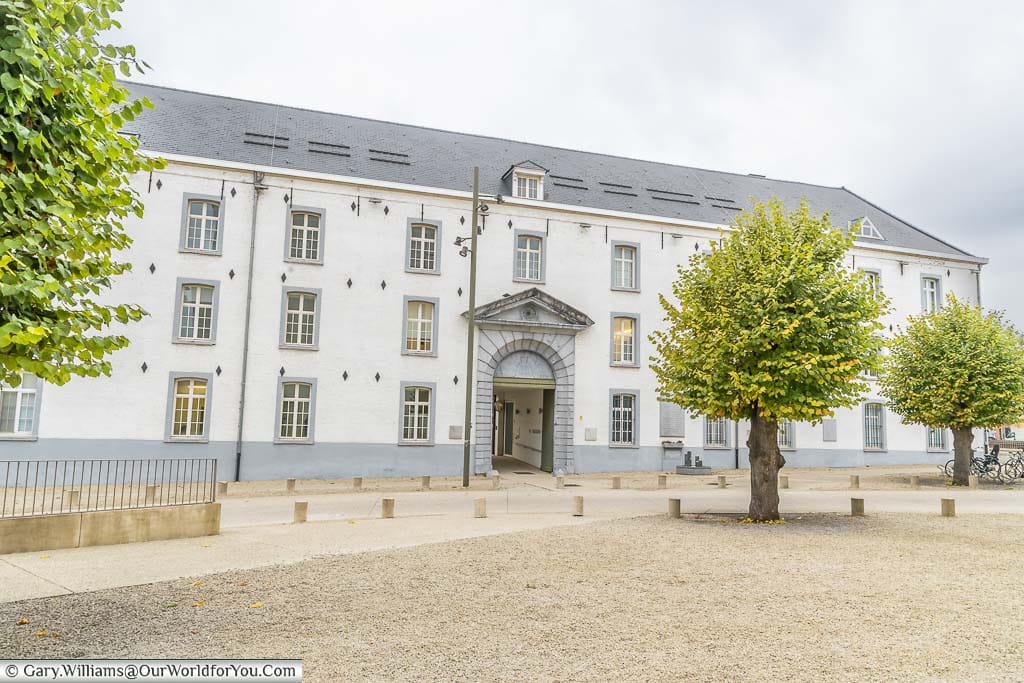
Tourist Information
Exploring the city of Mechelen
On a Burgundian walking tour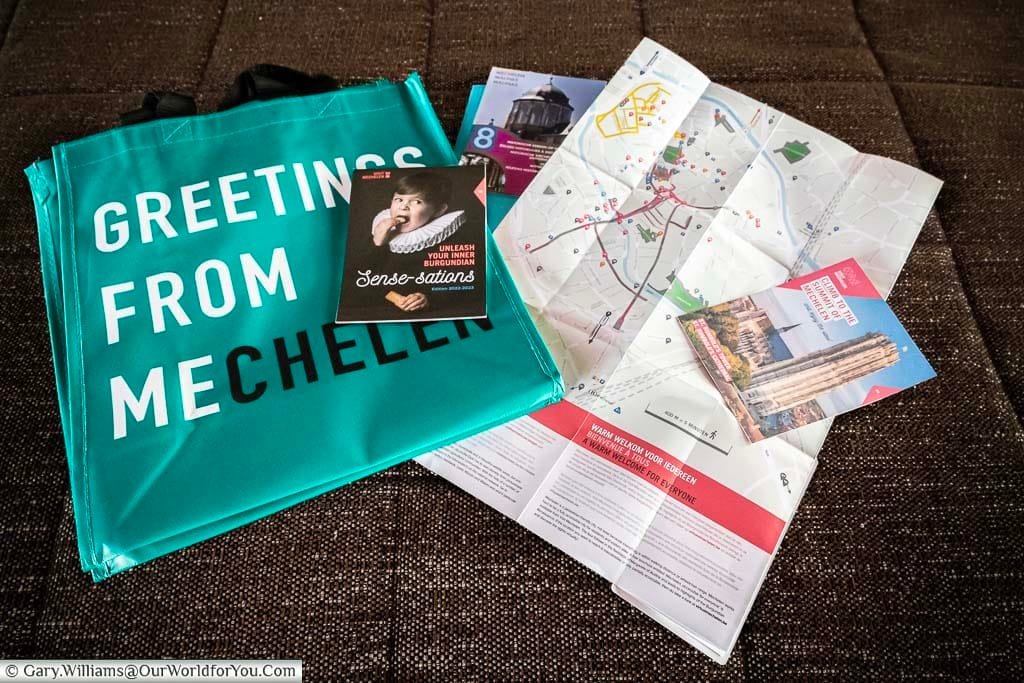
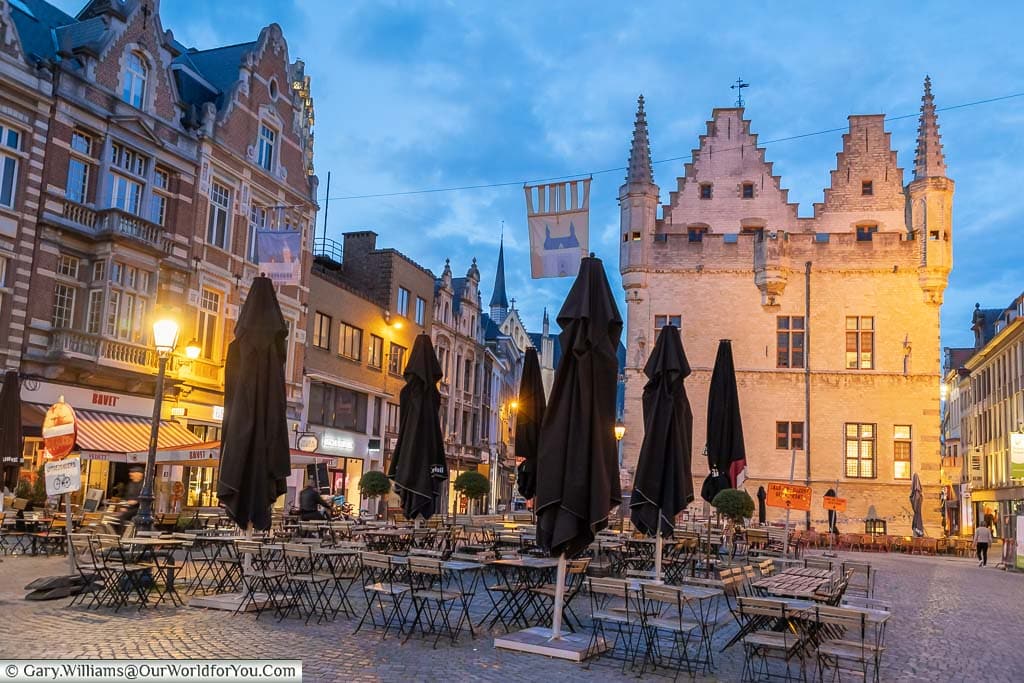
We strolled south of the Schepenhuis, which was currently being pedestrianised, towards the Dyle River. All the while, Marie-Louise informed us of Mechelen's architectural changes after WWI. Many of the buildings were sensitively rebuilt soon after the war and could be identified with the date in the 1920's.
Mechelen's history is particularly entrenched in the wool, fish, and corn industries, with references to this, dotted throughout the city. We wandered through the Korenmarkt, passing by a beautifully restored 16th-century palace Hof Van Cortenbach.
Heading towards the imposing 'Church of Our Lady across the river Dijle', this beautiful church is like a museum in its own right. It houses lovely art pieces, including Rubens's large triptych entitled 'The Miraculous Draught of Fishes'.
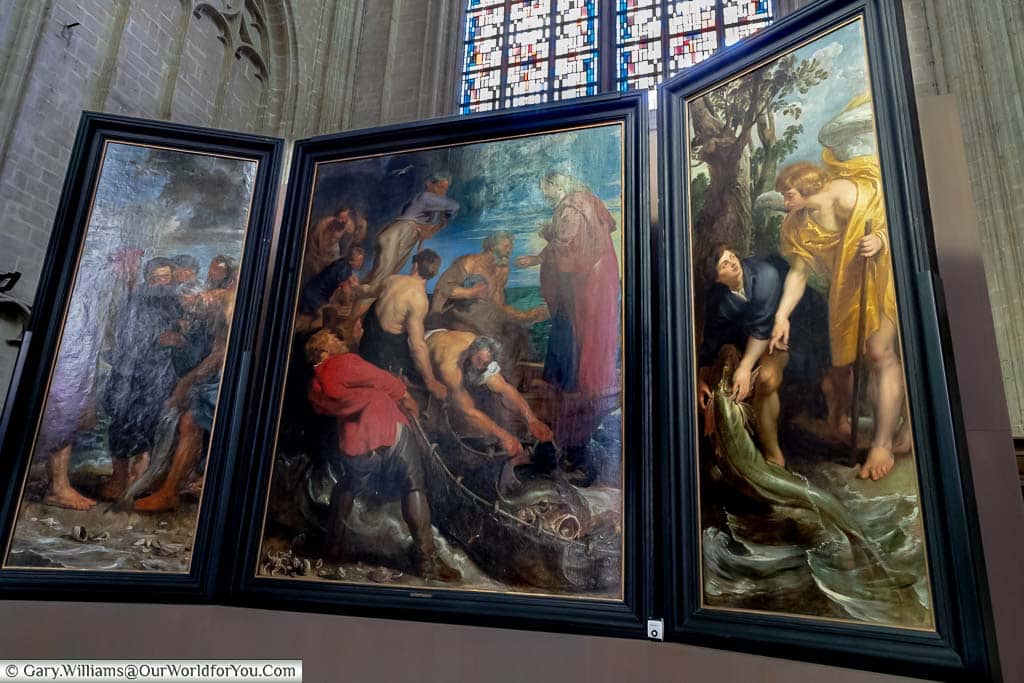
Meandering by the side of the River Dyle and along the Dyle pathway, Marie-Louise points out the fish merchant buildings with their beautiful wooden façades. You'll spot "De Steur" (the sturgeon), "De Waag" (the scale), and the Renaissance-styled building, "De Zalm" (the salmon).
On the opposite side of the river are old, converted malt warehouses nearby the Hoogbrug (bridge).
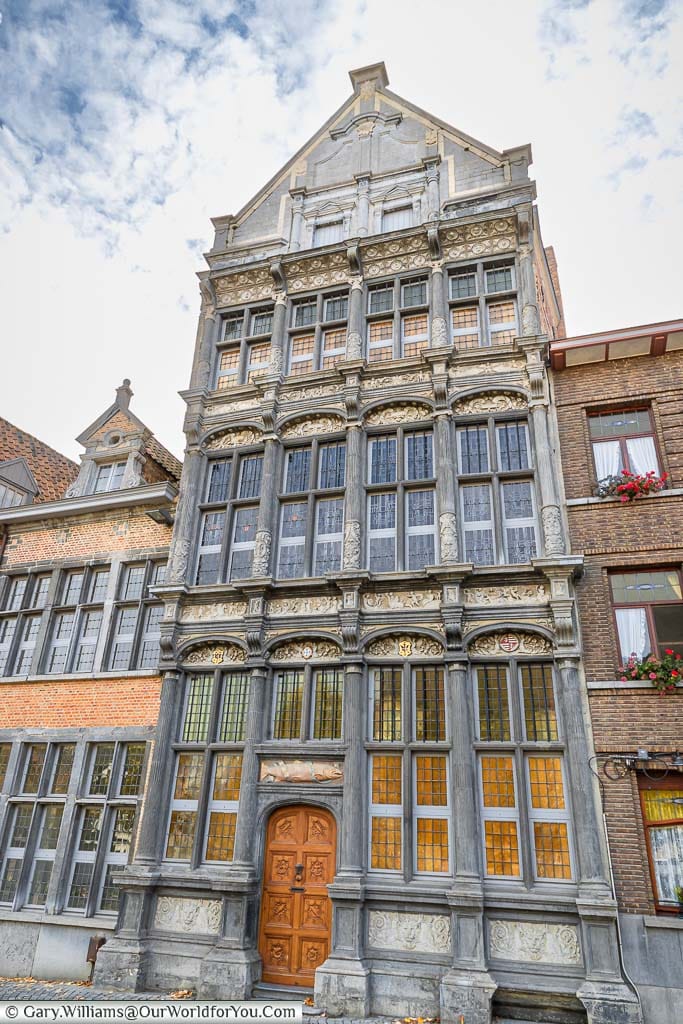
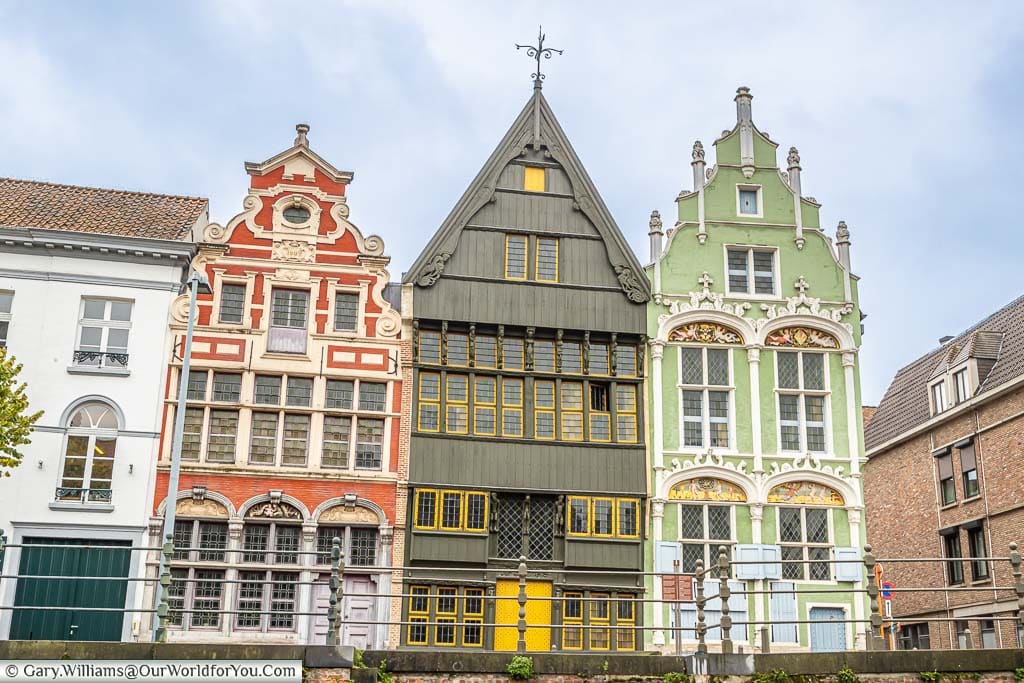
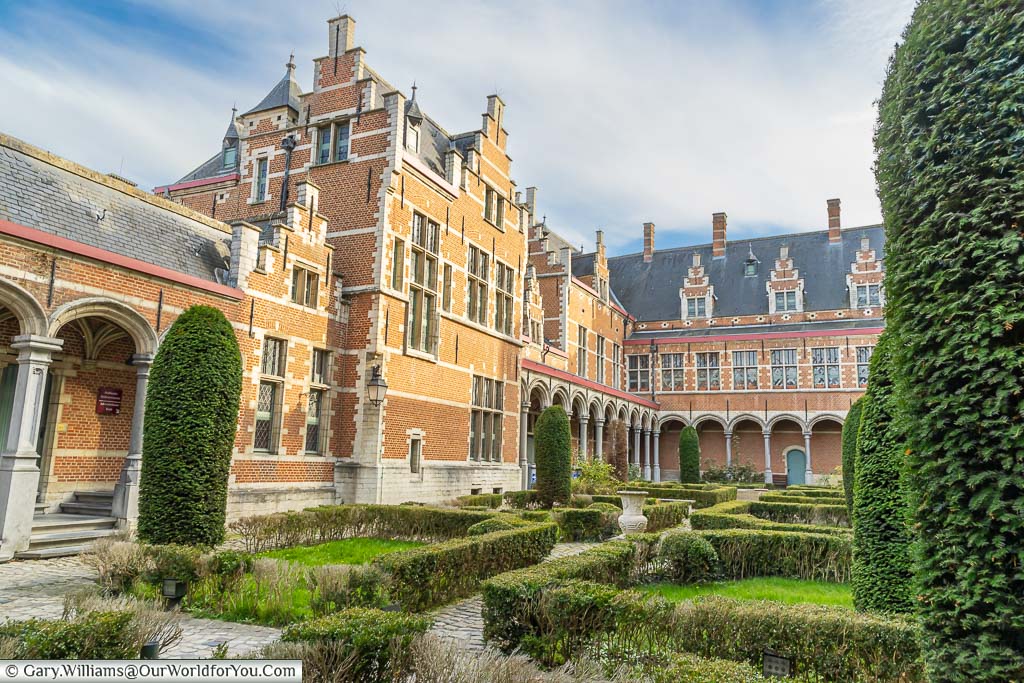
Climbing St Rumbold’s Tower
538 steps to the SkywalkA visit to Mechelen isn’t complete without a climb to the top of St Rumbold’s Tower. Yes, you thought it was time to kick back and grab a Belgian beer or a delicious coffee; no 538 steps await your ascent.
At the feet of St. Rumbold’s Tower is Mechelen’s beautiful St. Rumbold’s Cathedral. This Gothic cathedral stands proud in the city square and is magnificent inside and out. Take a seat in the church after your climb; you’ll appreciate it even more.
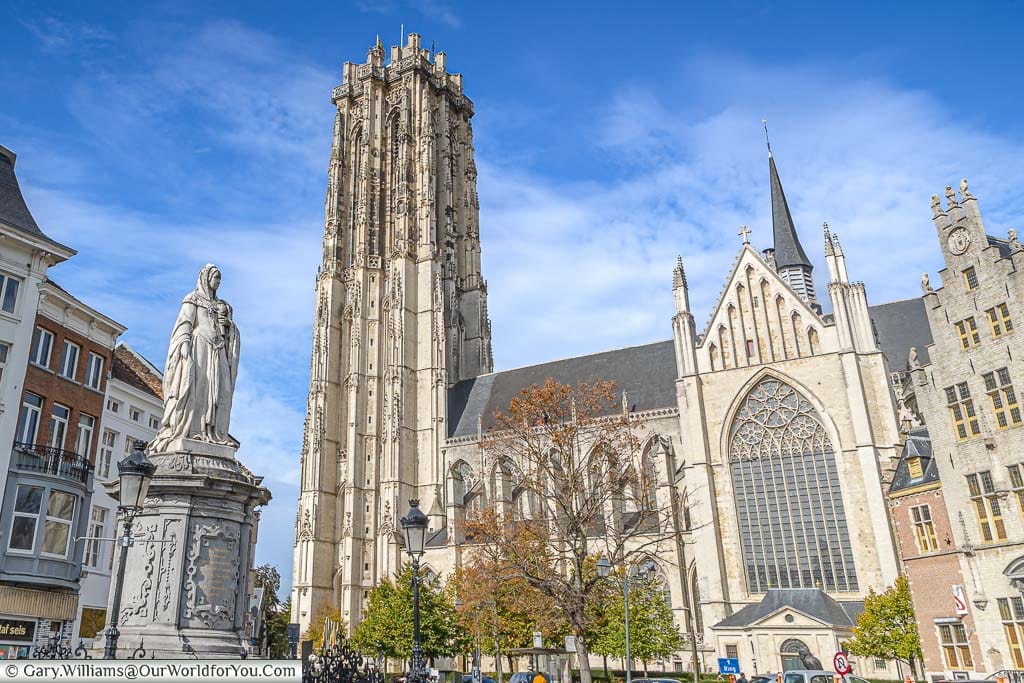
St. Rumbold’s Tower is Belgium’s highest Gothic tower standing at 97.5 metres high. In 1999 it was listed on the UNESCO World Heritage Site as one of the significant Belfries in Belgium and France.
The 538 steps to the top of the 360-degree Skywalk may seem daunting; however, there are thankfully five floors as you ascend the tower for you to rest and catch your breath. I certainly needed them.
The first 160 stairs take you to the Crane Chamber; luckily, an electric crane is now used in its place. In the centre of this room, you’ll get a bird’s-eye view of the cathedral organ below.
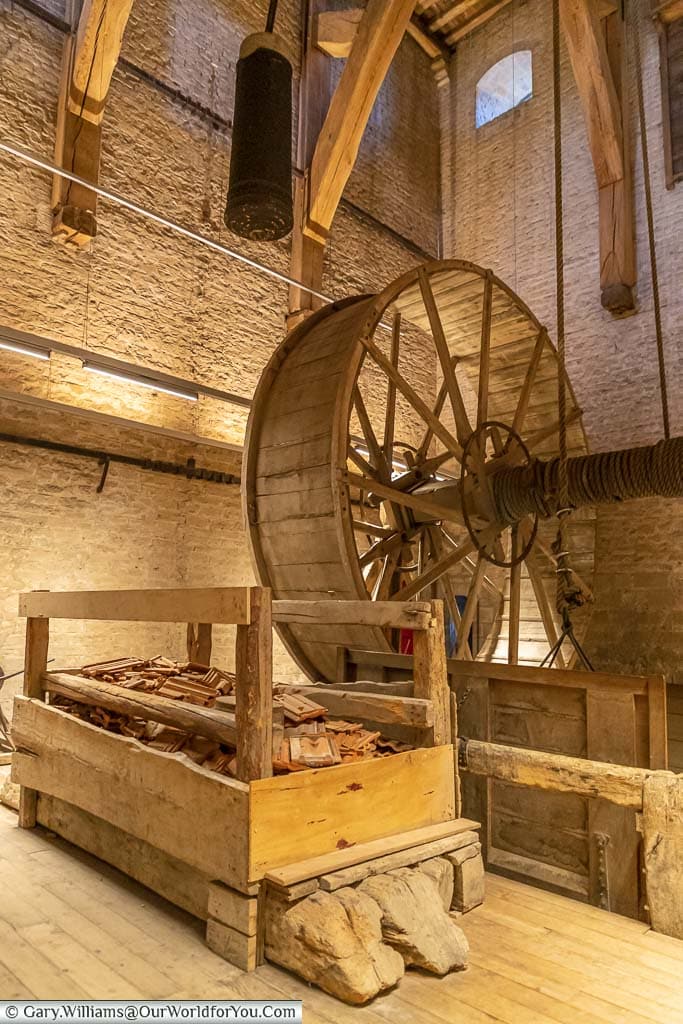
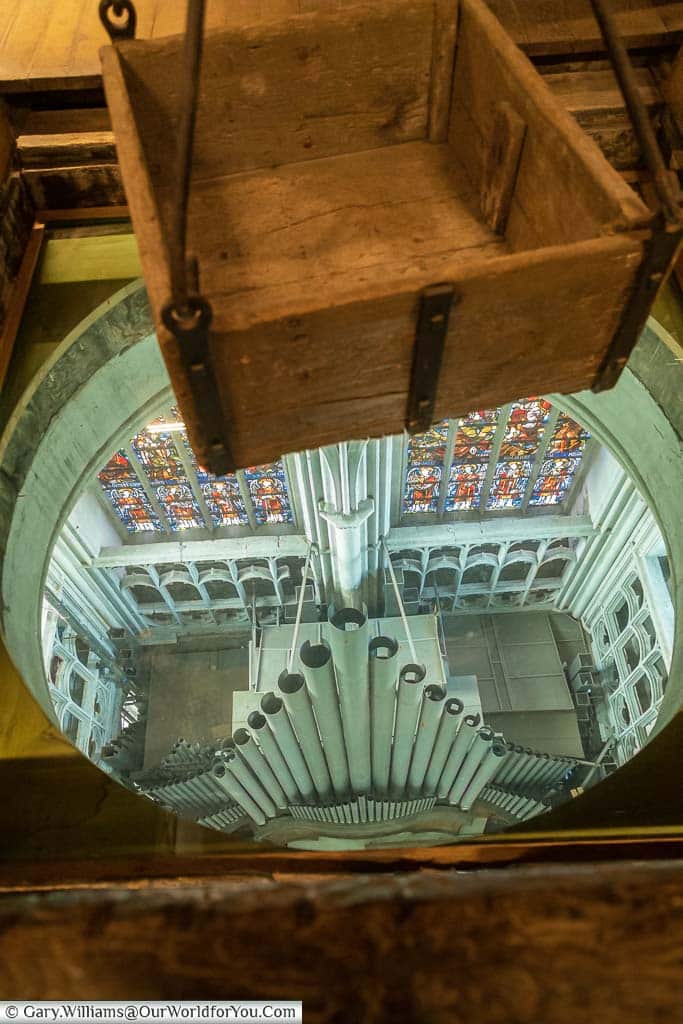
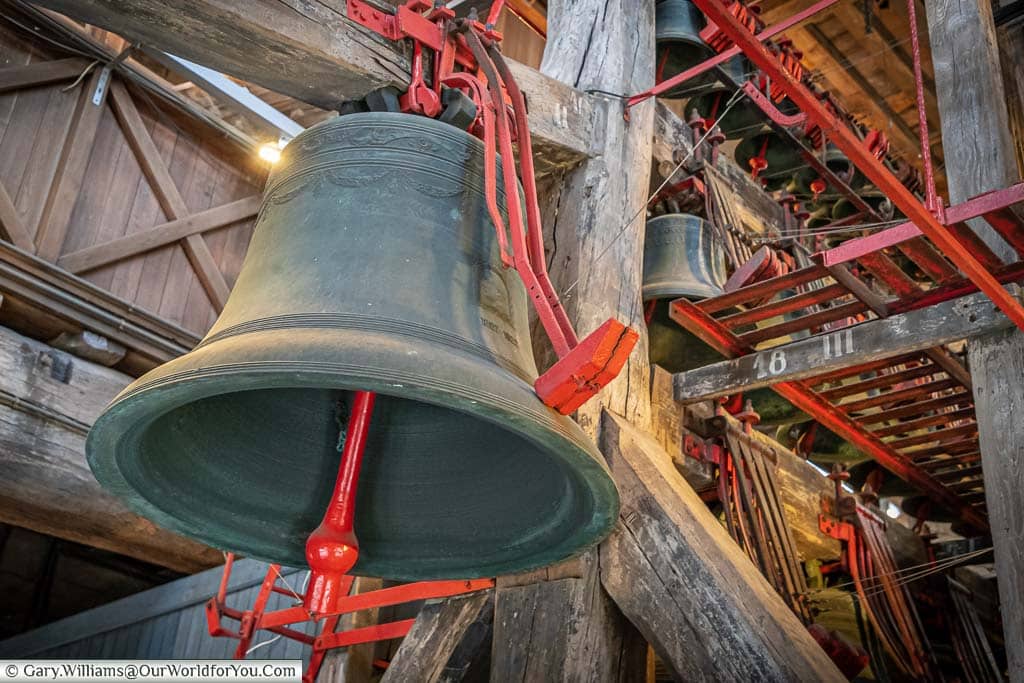
One hundred more stairs and we arrive at the New Carillon Chamber, with only another 88 to go. The following 40 take you to the Ash Cellar, which seems ironically named as this would have been the top of the tower before the addition of the Skywalk.
The last 48 steps, and we make it to the top of the Skywalk. The 360-degree views from the top of St Rumbold's Tower are incredible and are certainly worth the climb. Take time to soak it all in, as in no time at all, you'll be back on ground level.
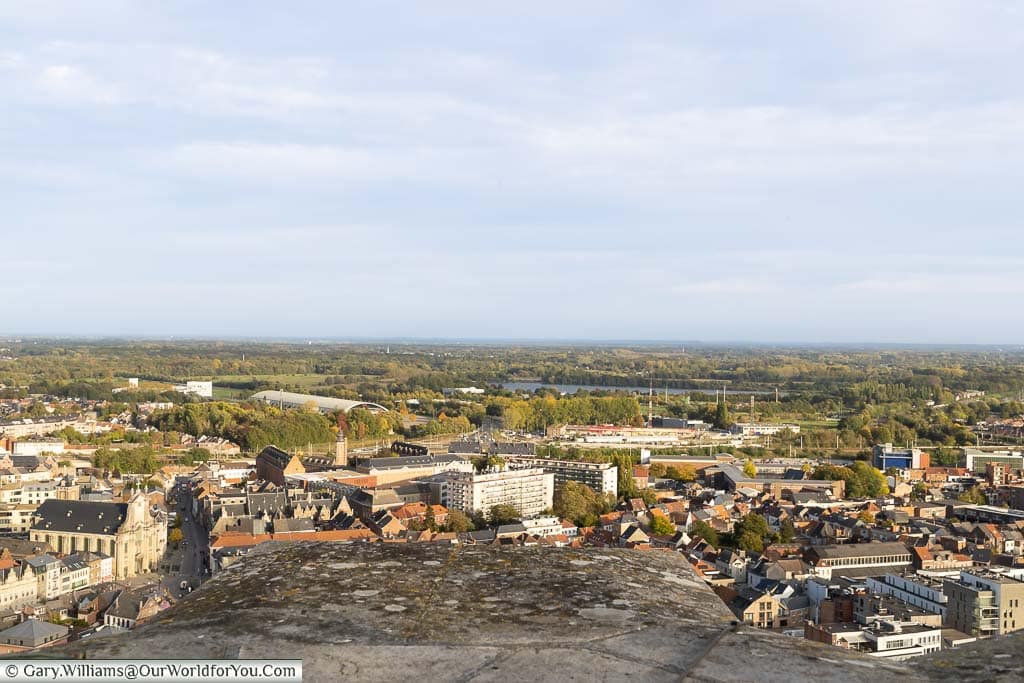
Maneblussers, the Moon Extinguishers
I always love a little bit of folklore, and still today, the people of Mechelen proudly hold the nickname Maneblussers, the Moon Extinguishers.
The delightful tale shared amongst visitors is that on one night in January 1687, a slightly inebriated local stumbled out of an inn in Grote Markt.
As he glanced at St Rumbold's tower piercing into the hazy skies, he noticed the tower was ablaze. He raised the alarm, and the city came out in force to extinguish the fire with hand-to-hand buckets of water.
Before the chain of buckets reached the top of the tower, the moon slipped away, and the reddish glow disappeared along with it. The loyal citizens of Mechelen were trying to extinguish the moon.
Het Anker brewery tour
It began with the BeguinesThe foundations of the Het Anker Brewery began within the Beguines hospital in the Large Beguinage in Mechelen, which forms part of a UNESCO World Heritage Site. The Beguines were a group of single ladies who lived within a self-sufficient community and took no religious vows.
The women lived modest lives and supported the sick and disadvantaged women within the city. The Beguinage in Mechelen is different in character to others in Flanders as they were usually small towns within towns. The women were rehoused within the city walls of Mechelen after their original Beguinage was destroyed in 1560.
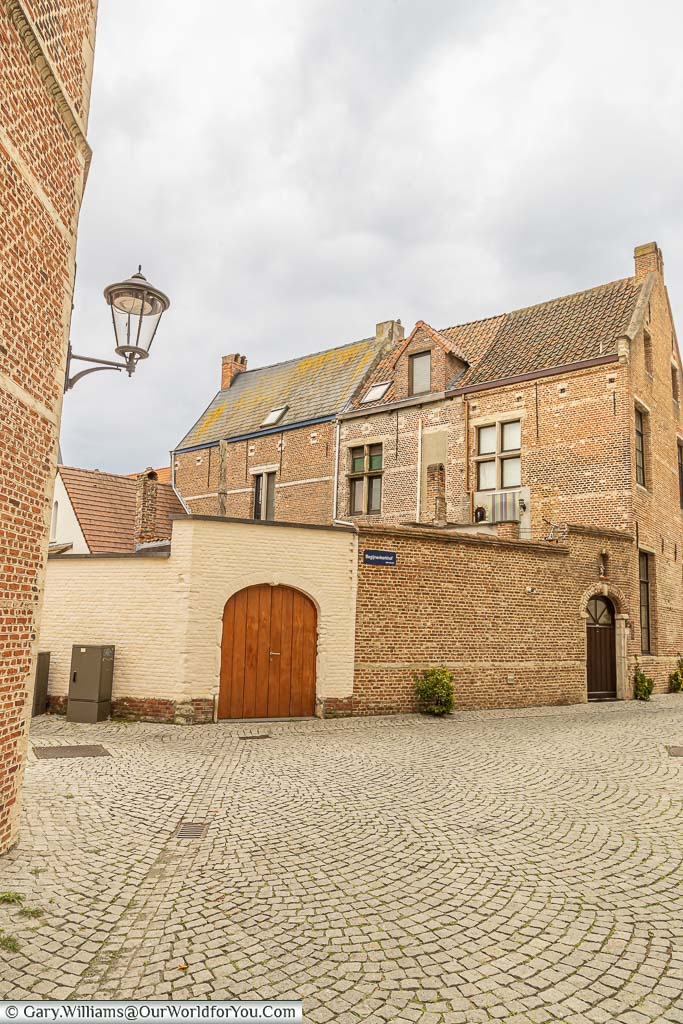
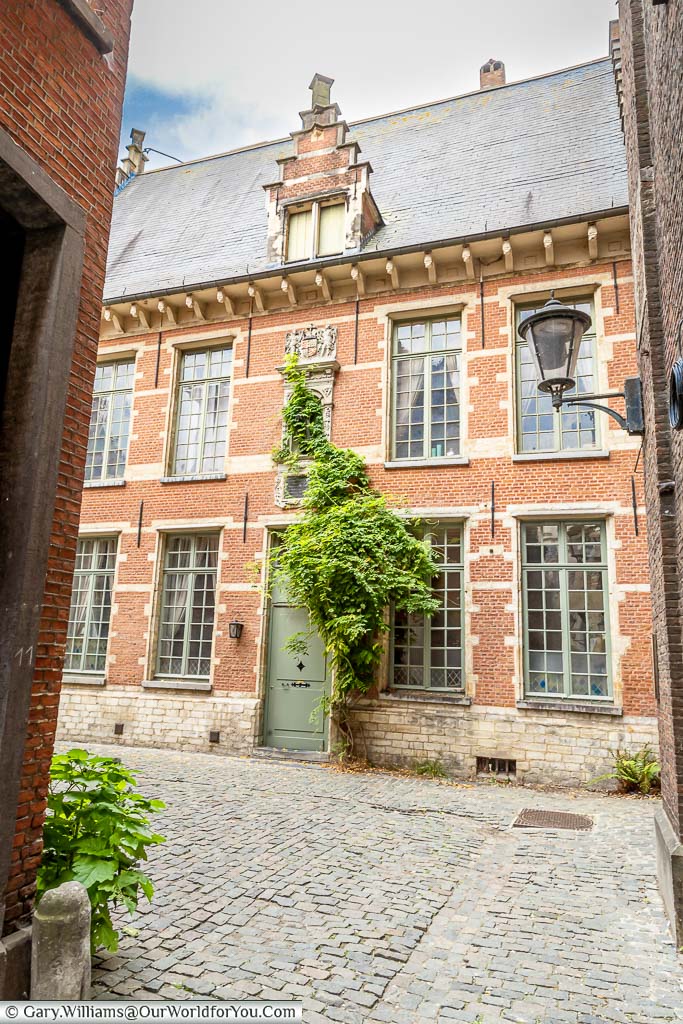
Whilst caring for the sick, the Beguines discovered it was beneficial to boil the local water and to improve the taste, they added flavourings. This evolved into them brewing their own beer, and so in 1471, a brewery was founded.
The hospital, along with other 15th & 16th century buildings, now form part of the Het Anker Brewery and is one of the oldest breweries in Belgium.
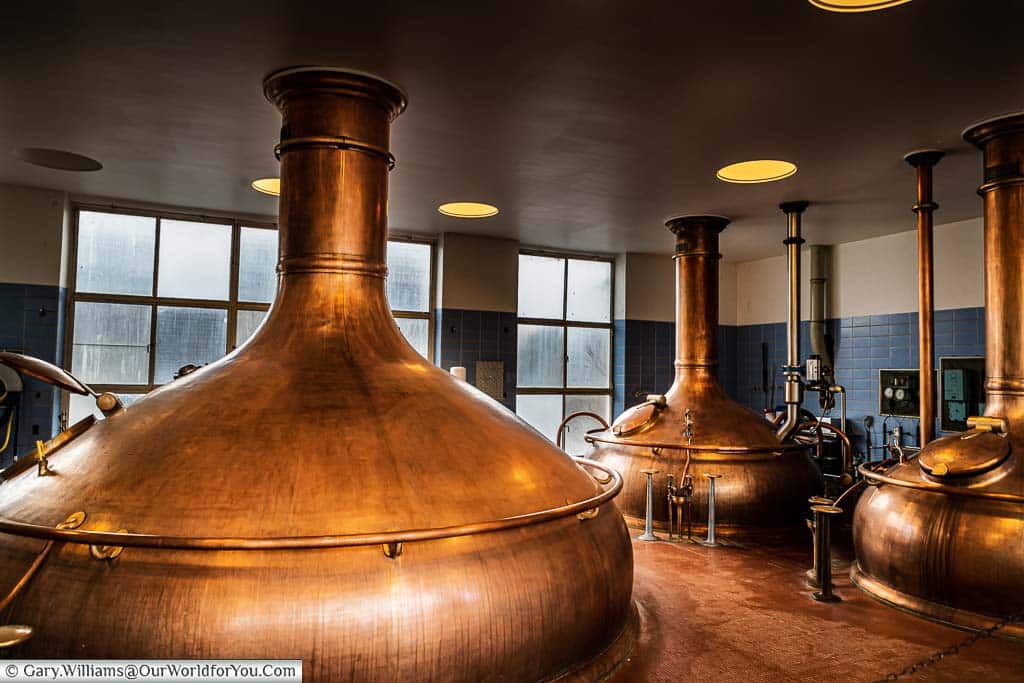
The relaxed Het Anker Brewery tour lasts for two hours. It leads you on a charming and fascinating journey through the life and processing practices of the brewery. In 1872 the Van Breedam family purchased the brewery, and five generations later, its legacy still remains.
Het Anker produces many variations of their Gouden Carolus beers along with seasonal favourites. The Gouden Carolus is named after Charles V, the Holy Roman Emperor. Charles spent his formative years in Mechelen, and when he settled in Spain later in life arranged for Mechelen's beer to be shipped to him.
The four main ingredients for brewing beer are grain, hops, yeast, and water. However, unlike the brewing process in Germany, Belgians can add herbs and spices to their beers, which creates the many variations we know and love.
You are guided through to the brewing hall where the three copper brew kettles are located, the entire brewing process from grain to glass, takes around six to seven weeks.
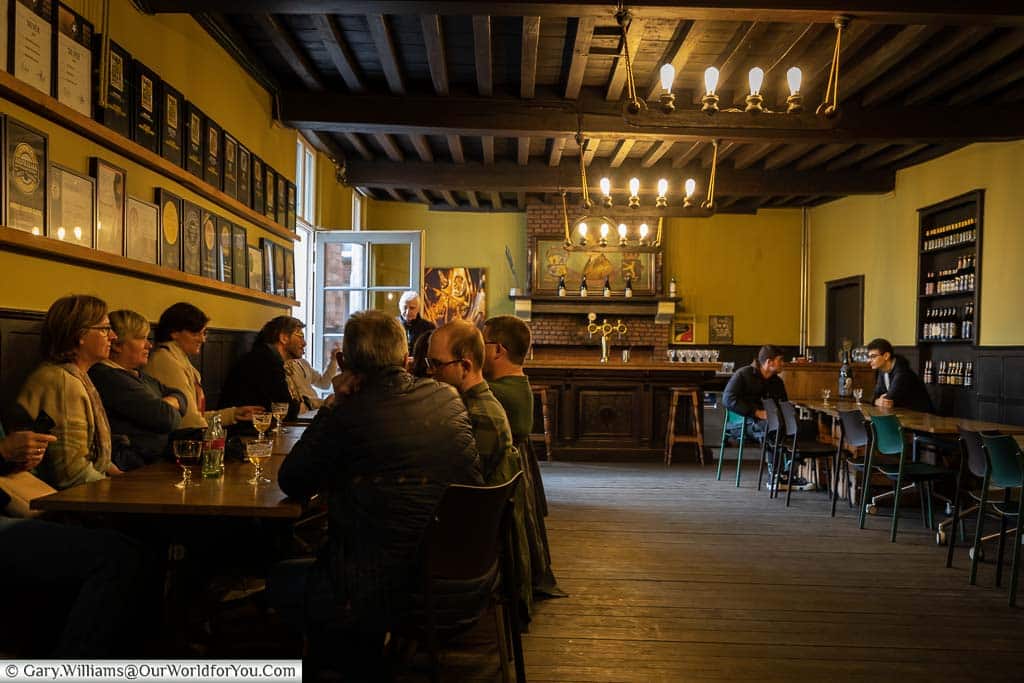
Het Anker brewery not only produces mouth-watering beers but also distils its own single-malt whiskies. During the tour, you can sample one of their whiskies and two beers, the Gouden Carolus Tripel and the Gouden Carolus Classic.
The brewery tour was incredibly informative and fun. Rudy, our guide made us feel very welcome and effortlessly explained it to us in English and Dutch.
Mechelen’s historical waterways
Jump aboard a boat tourThe historic city of Mechelen has grown and evolved over the centuries all along the River Dyle. The meandering waterways were once flourishing from its malt and grain industries and also Mechelen’s lucrative trade in fish, which took place at the 16th-century Vismarkt.
Today the fish market is a bustling square with restaurants and bars. However, evidence of the fish merchant houses can still be seen on the water’s edge.
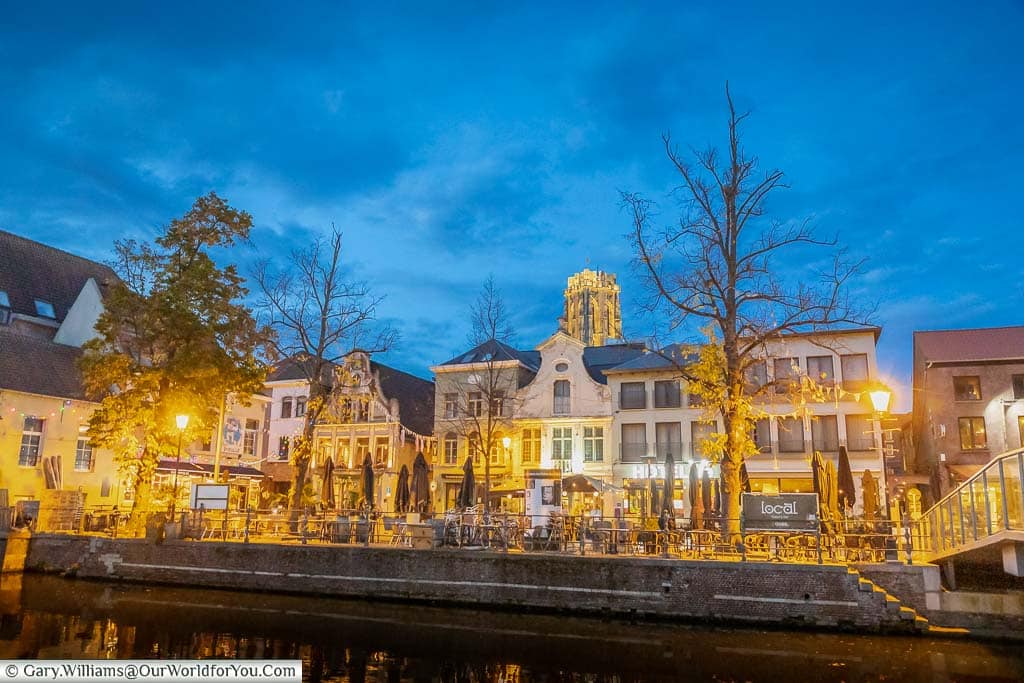
Many years ago, Mechelen was alive with snaking canals through the city; however, the waterways were filled in due to sanitation and health reasons. Although in recent years, the hidden canals and brooks are gradually being revived as part of the European project 'Water in Historic City Centers'. The Melaan brook is one of these and is now a pleasant place to amble along and is wonderful for the environment.
Keep an eye out for multiple circles dotted along pathways and in the roads; these signify where Mechelen's waterways still pass underground.
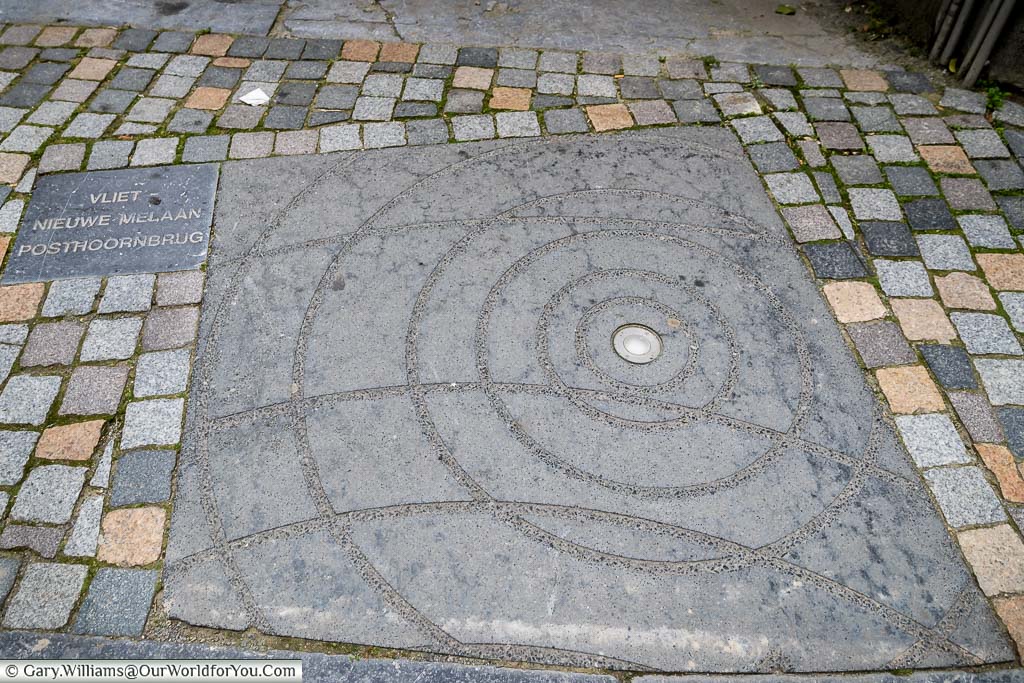
To truly appreciate the history and life of the Inner Dyle, we highly recommend hopping aboard a boat tour with Rederij Malinska. The 45-minute cruise starts and finishes at Haverwerf, offers a unique perspective of the city and is overflowing with fascinating tales and intriguing snippets of information.
The peaceful electric boats guide you through the marina, passing by some charming riverside homes and onto Keerdok. Here you’ll see the lock, which would eventually lead out to the North Sea.
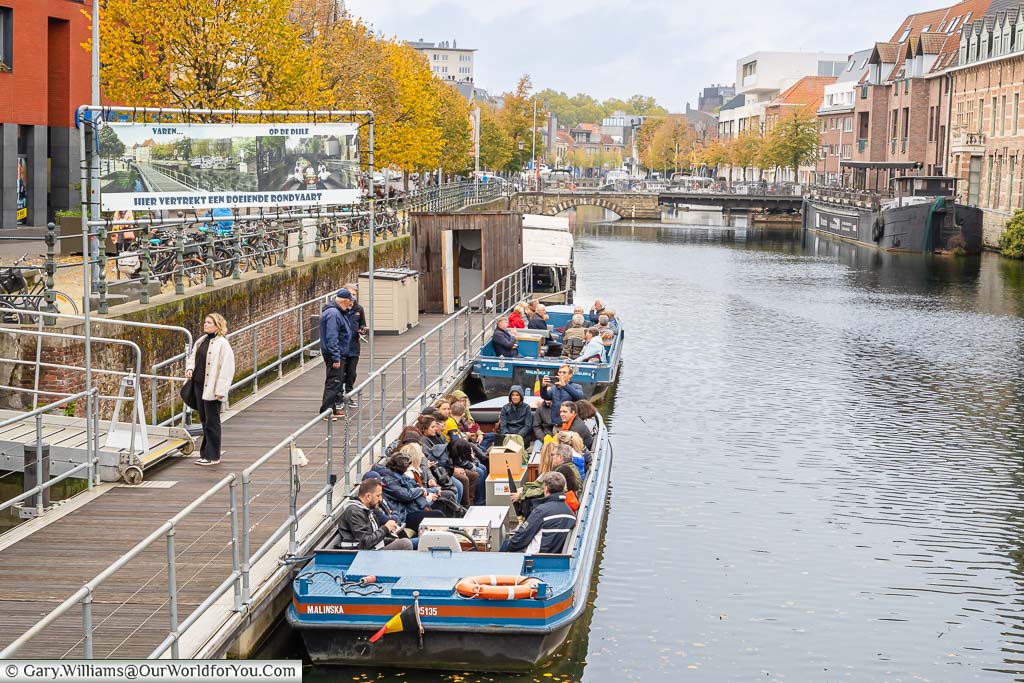
Keep a lookout for the low bridges you’ll need to duck down.
Cruising back towards Haverwerf and beyond, you'll spot the former Lamot Brewery, converted warehouses and incredible views of the Church of Our Lady of Hanswijk and the Church of Our Lady by the Dijle.
We'll also pass under Hoogbrug (High Bridge), which dates from 1230 and is the oldest stone bridge in Flanders. The Hoogbrug has a unique feature; on one side, it has three arches, and on the other, it has four. This low archway led to the nearby fish market.
Visit to Het Kunstuur
A vision into Belgian MastersDuring our visit to Mechelen we visited Het Kunstuur to embark on their unique one-hour art tour of Belgian artists from 1850-1950. The unusual aspect of this delightful tour is that each piece of artwork is explained in detail from a vision of a Belgium celebrity projected next to the masterpiece.
You are led into a dark room, and one at a time, the exhibited original paintings are lit up. Each celebrity has chosen a piece of art that they have a personal connection with, either by the feelings, it evokes in them or how it relates to their individual circumstances.
Many of the paintings are from private collections and have seldom been shown to the public. The other works are on loan from museums. The exhibition is held in the 13th-century "Chapel of Holy Spirit" opposite St Rumbold's Cathedral and runs until 30th November 2022.
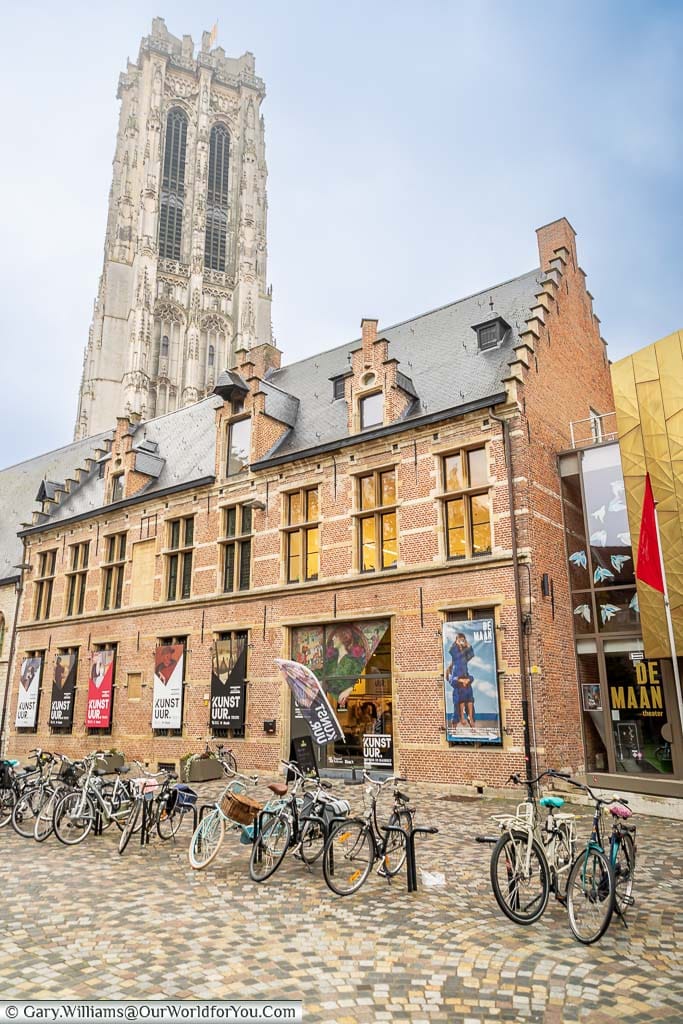
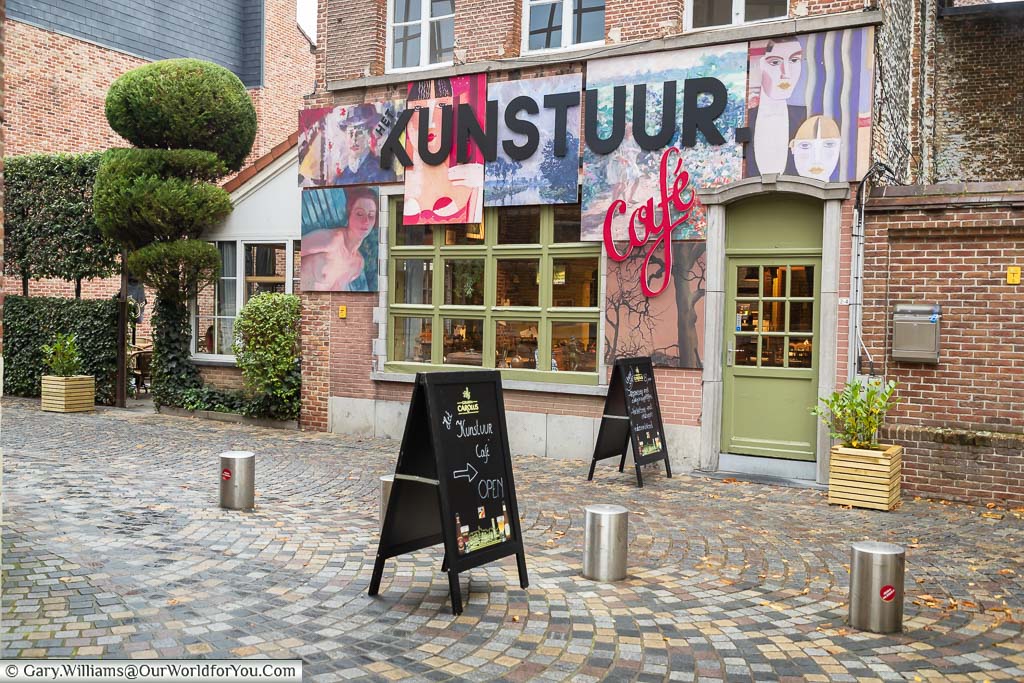
Just a point to note is that you need to arrive 15 minutes early for your visit. The eight people in your group are required to wear a headset, and each of you will grab a portable chair as you will need this in each room.
What I suggest is that you visit the Kunstuur Café which is opposite the exhibition, as this is a wholly unique experience altogether.
If you’re heading off on a Belgium adventure, then grab a copy of this DK Eyewitness book. I love planning road trips and these guides are so helpful.
I find them extremely informative, easy to follow and the pictures and maps tempt you into discovering more of the back roads.
Strolling Mechelen’s historical streets
Waking amongst ancient Flemish footstepsMechelen is a delightful city to discover on foot; each historic street or lane that leads from the Grote Markt takes you on a voyage of discovery. Nearly every landmark or attraction you’ll visit is only around a 10-minute walk from this ancient square.
Visit Mechelen on a Saturday, and you can mix with the locals in their bustling weekly market.
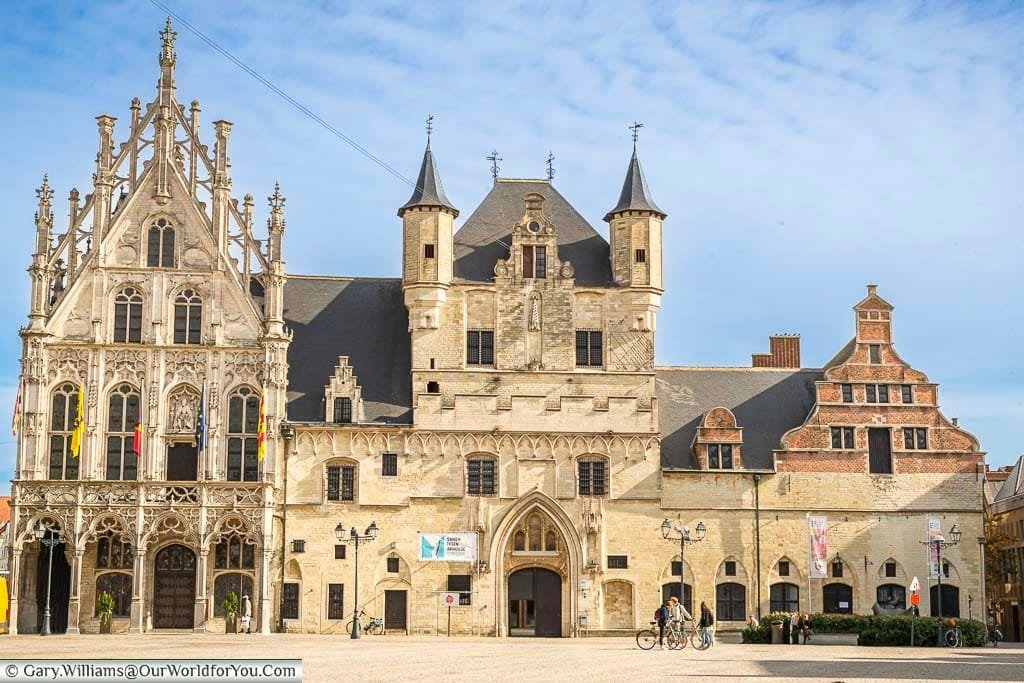
The magnificent Gothic city hall in Mechelen dates from 1326; however, unlike many Cloth Halls, it doesn't have a belfry. During the 14th-century, the cloth industry was in decline, the city ran out of money, and the belfry was never completed. Although this doesn't distract from how beautiful the cloth hall is.
Take time to admire the charming architecture in the Grote Markt; there are many styles, including 16th-century Renaissance and 18th-century Rococo. Also, look out for the cute wooden street sign near Schepenhuis; it depicts the city's landmarks in characters.
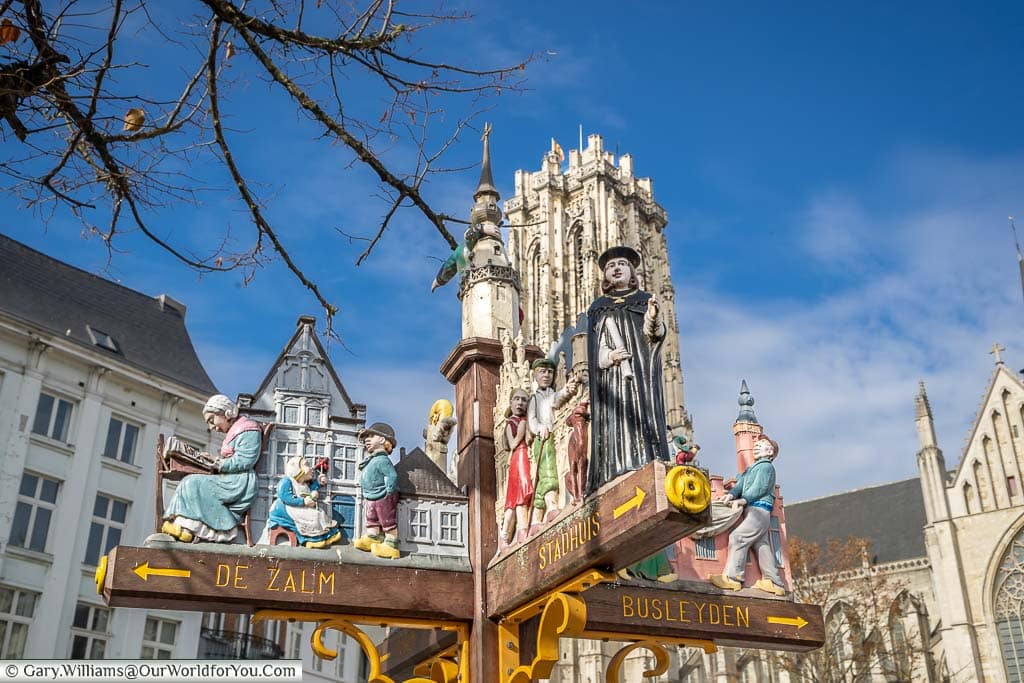
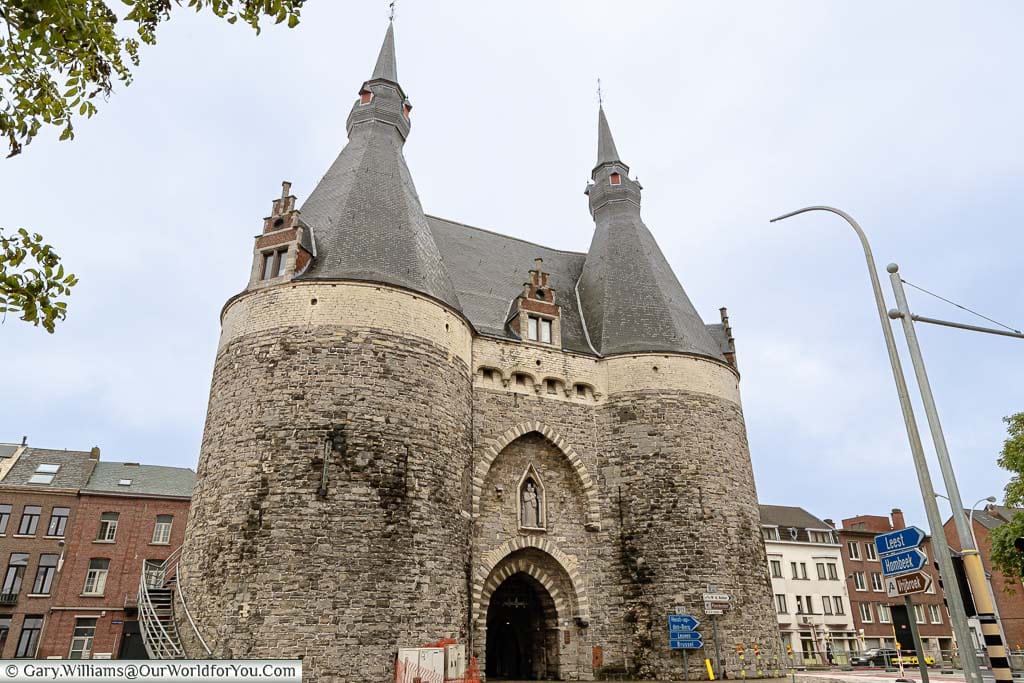
Our video of Mechelen
We have created a YouTube video of our visit to Mechelen. Why not take a look?
Also, why not subscribe to our YouTube channel and get the latest clips as we post them?
Where we ate in Mechelen
The cuisine of the highest levelOn our first night in Mechelen, we were hosted by the restaurant Lam’eau, located along Haverwerf in the old, converted Lamot Brewery.
Lam'eau was a lovely restaurant; the surroundings were very modern and stylish, the atmosphere was pleasingly relaxed, and the staff were very welcoming.
The menu was in Dutch and English and had a varied selection of fish, vegetarian and meat dishes. Lam'eau uses regional produce and changes the seasonal menu monthly.
I chose hake served with fine vegetables and crayfish in a white wine and leek puree. It was incredibly delicious and quite filling, considering how light the dish was.
Gary chose the grilled Black Angus entrecôte, grilled seasonal vegetables, fries, and béarnaise sauce. He likes his steak cooked rare, and he said it was perfect.
We both skipped dessert as we were full; however, they did look wonderful.
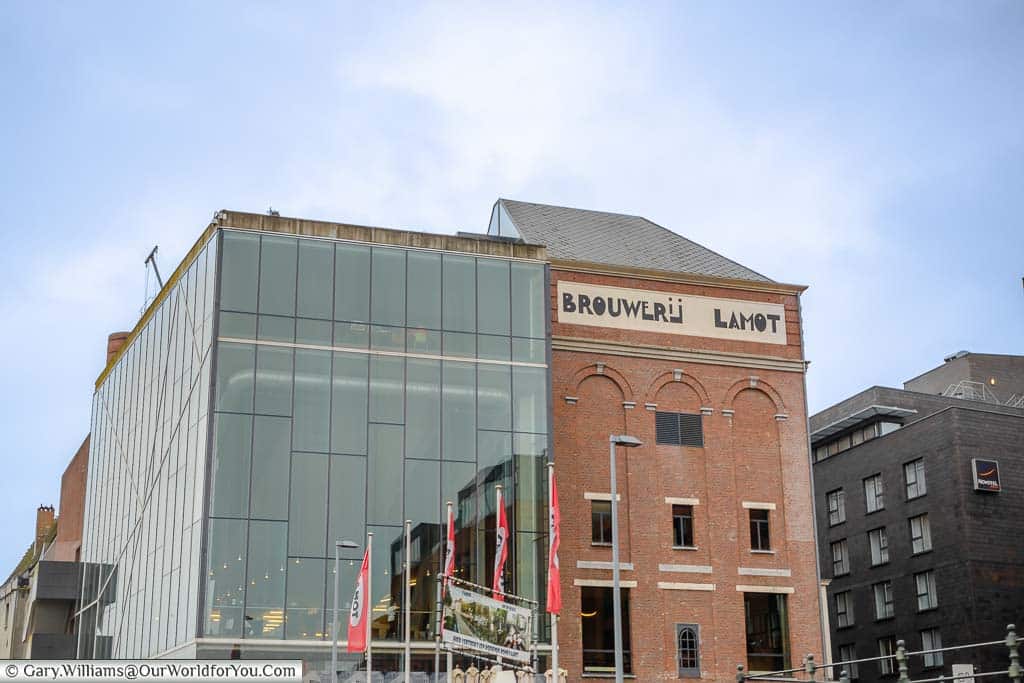
For lunch, on our second day, we checked out De Vleeshalle, a vast food hall where butchers once sold their produce. Today it is a culinary hotspot in the heart of Mechelen and offers dishes from around the world.
Gary kept with the traditional Belgian dish of croquettes from ‘Bubba Croquettes’, which are handmade and were outstandingly crunchy and very tasty. There were three different types, cheese, shrimp and Ganda ham.
I went for a taste of Spain at ‘Tapas la Qia’. Unfortunately, they had run out of their popular dish, paella; however, the fresh albondigas in a rich tomato sauce did not disappoint.
All the food in De Vleeshalle looked amazing; it was a struggle to decide which cuisine to have. We wanted to sample a little bit from every vendor.
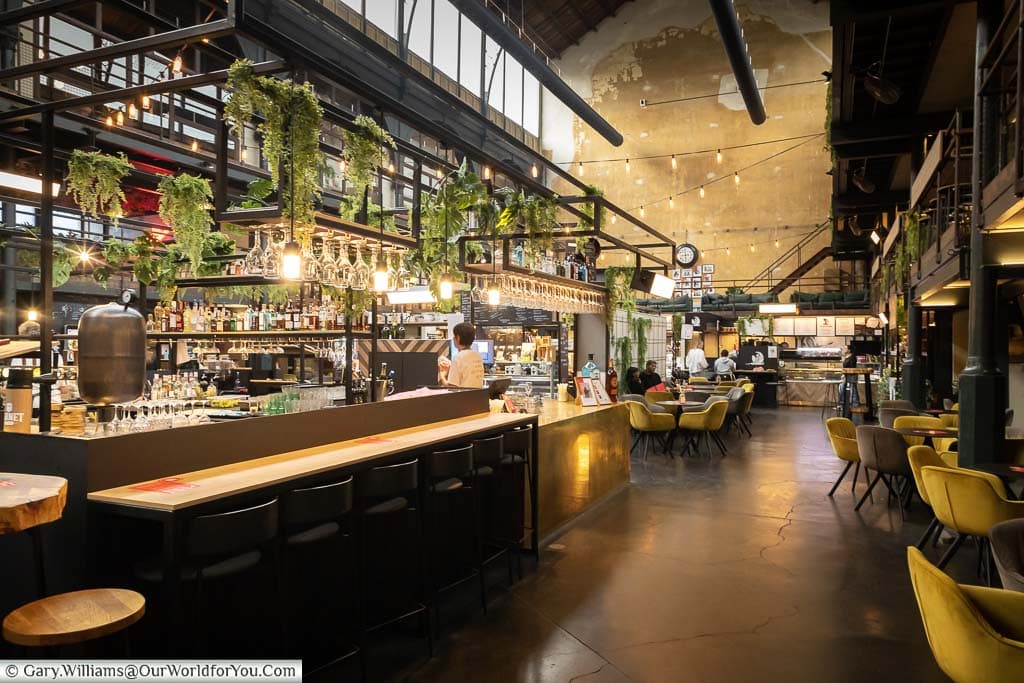
For our second night in Mechelen, we were hosted by the incredible fish and seafood restaurant Emiel located in Vismarkt. This restaurant was exceptional, and the quality of the food was exquisite.
The seasonal menu changes monthly; Emiel has a set menu, although you can choose to have four, five or six courses. We decided to have four courses.
In our opinion, dining at Emiel was like eating at a Michelin-starred restaurant. The care, preparation, and freshness of all the ingredients were of the highest quality.
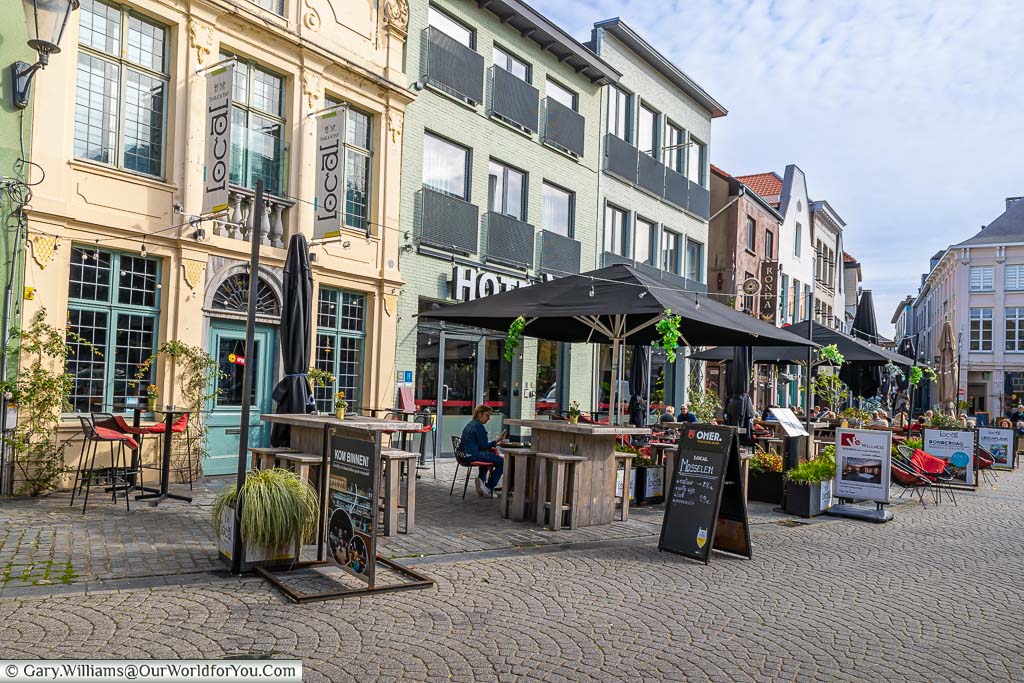
The meal started with an hors d'oeuvre followed by North Sea shrimp, pumpkin and comté. The second course was scallops and celeriac in hazelnut butter, and the main course was a cod fillet with seasonal vegetables and wild mushrooms. The finale was chocolate, with Jerusalem artichoke and lemon.
This was one of the best meals we experienced on our Flemish road trip.
Where we stayed in Mechelen
The serene Hotel Martin’s PatershofDuring our stay in Mechelen, we were hosted by Hotel Martin’s Patershof.
Hotel Martin’s Patershof is a beautifully restored church hotel located along the quiet street, Karmelietenstraat and was incredibly peaceful day and night.
This beautiful hotel was a former 19th-century neo-Gothic convent and was converted into a Martin’s Hotel in 2009. The accommodation and recreational areas are tastefully blended with the historic church and modern-day amenities.
The Hotel Martin’s Patershof is only a five-minute stroll to the Fish Market and 10 minutes to the Grote Markt in Mechelen, so perfect for a weekend getaway.
The staff were very welcoming and friendly, allowing us to check in to our room early.
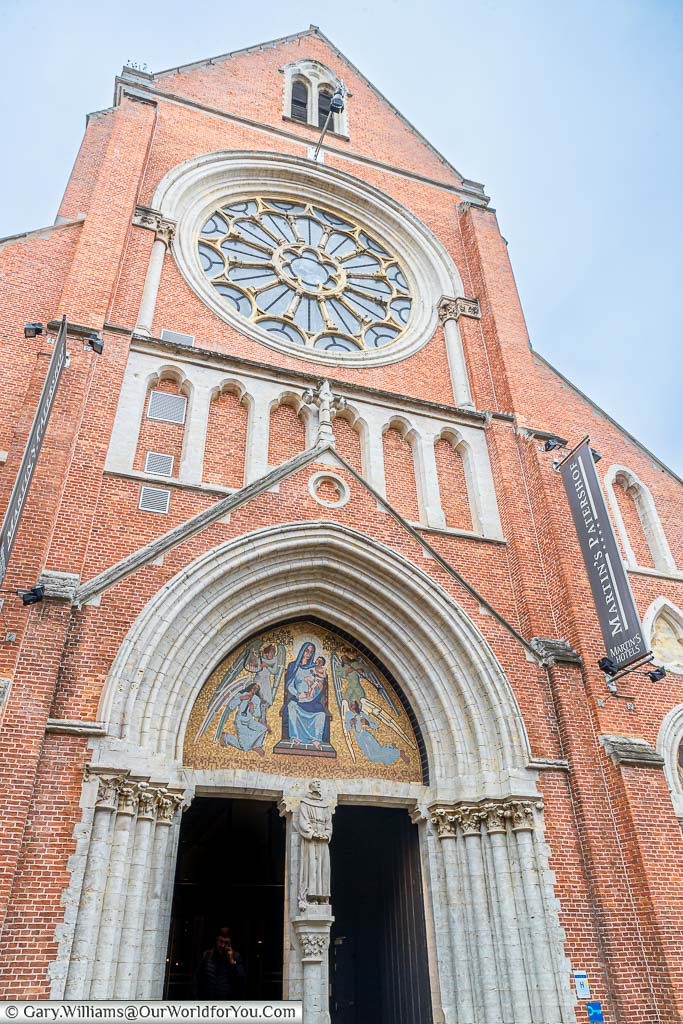
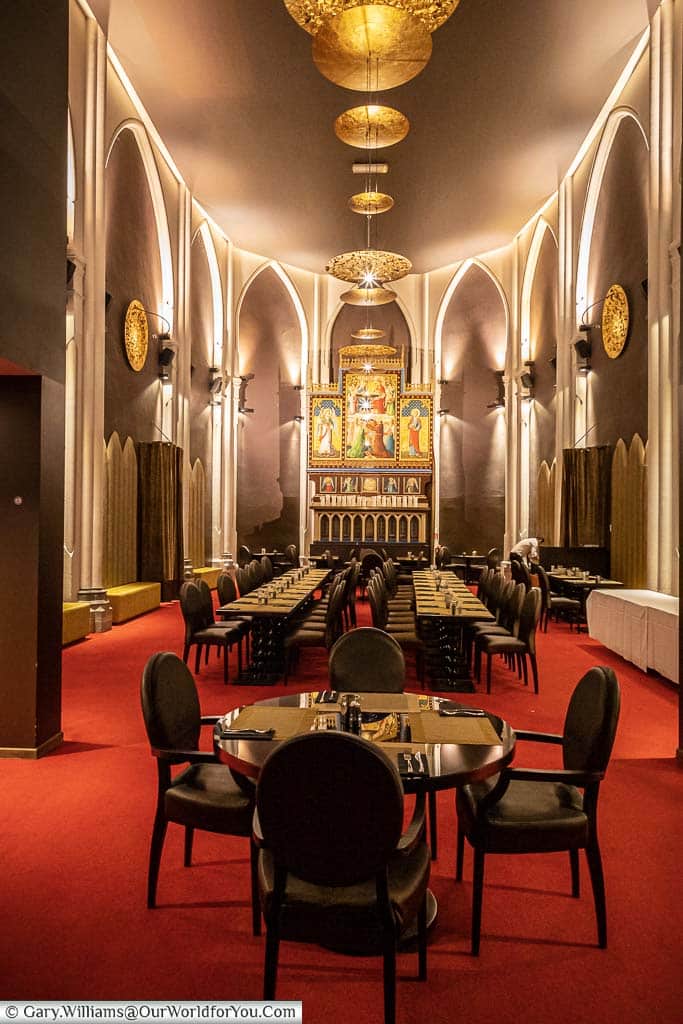
We were privileged to be given the ‘Best of Home’ room, which was breath-taking. The suite on the fifth floor encompassed five stained-glass windows nestled between authentic arched stone columns.
There was plenty of space and seating to relax in the room, and the light glistening through the stained-glass windows was so calming. The desk area in the suite was a reasonable size, allowing us to set up our charging station and work on the laptop. There were also plenty of sockets.
Our bathroom was spacious and included all your essential toiletries; it even had a spa bath with an adjustable shower and the lovely addition of plush bathrobes.
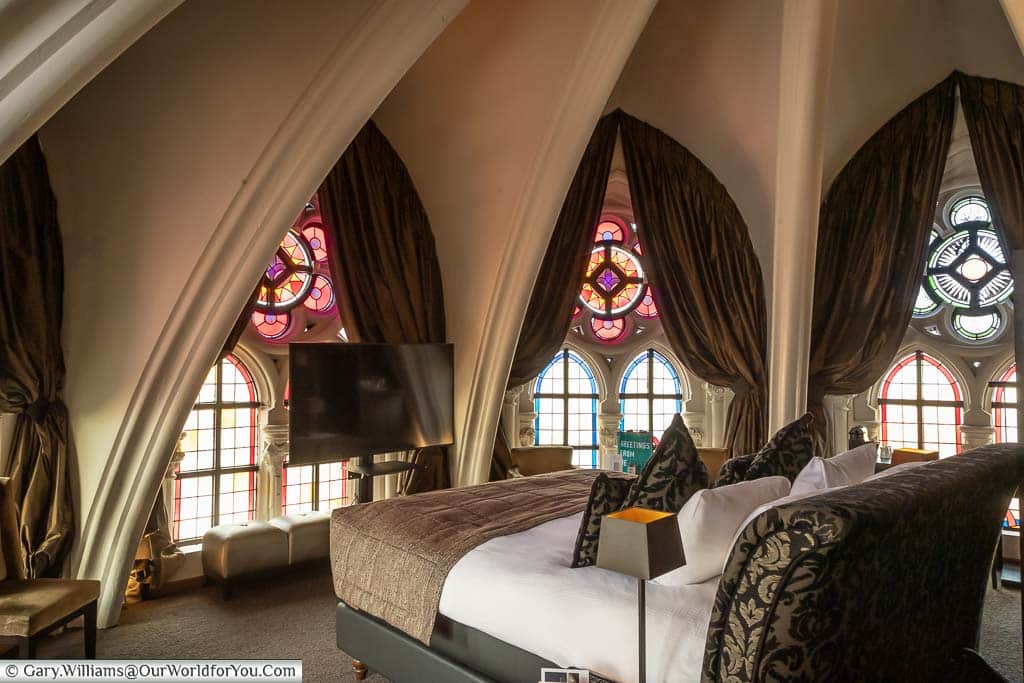
There was a wide variety of food and drinks for breakfast, and all were served in a charming dining room with individual tables. The food was constantly replenished, and ample coffee, tea, and fruit juices.
The Wi-Fi speed from our bedroom was 16.5mbps download and 15.3mbps upload.
We visited Mechelen as part of a Flanders road trip, so the on-site car park was perfect and was chargeable at €30 per day.
Disclaimer
* This post may contain links to affiliated sites where we earn a small commission at no additional charge to you.
